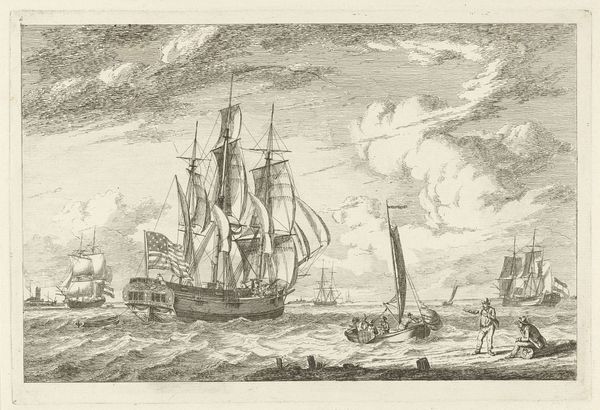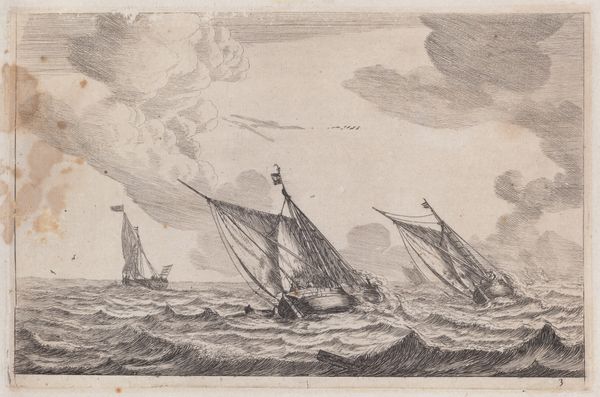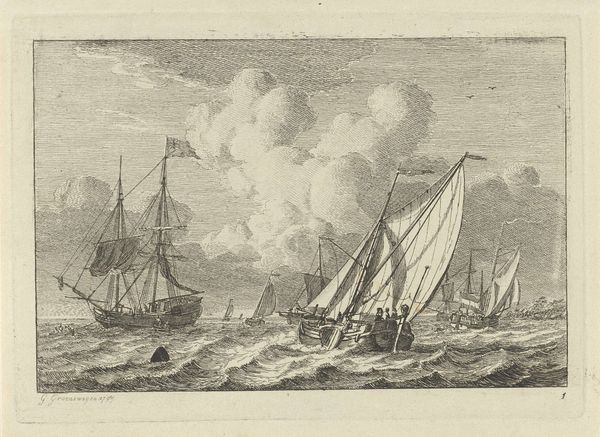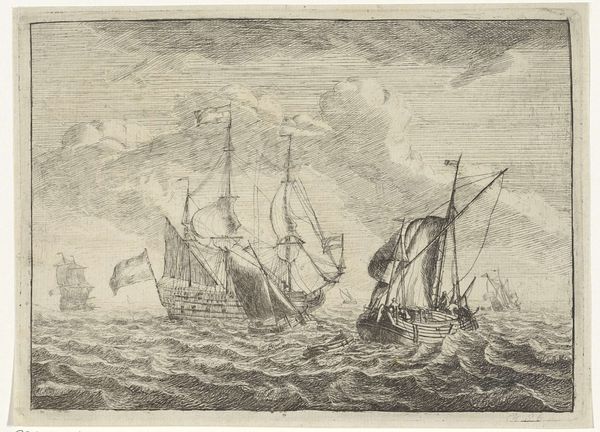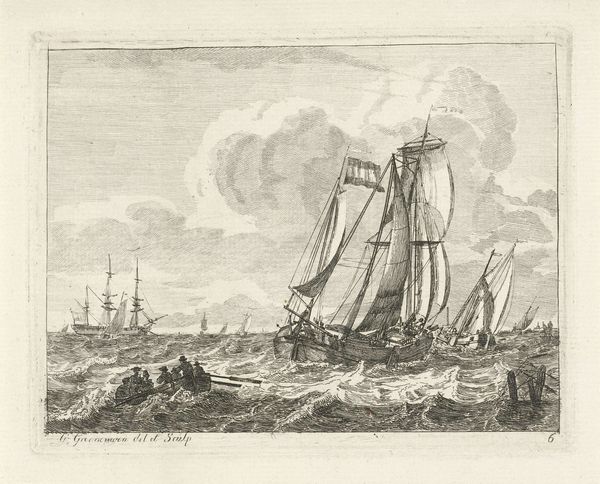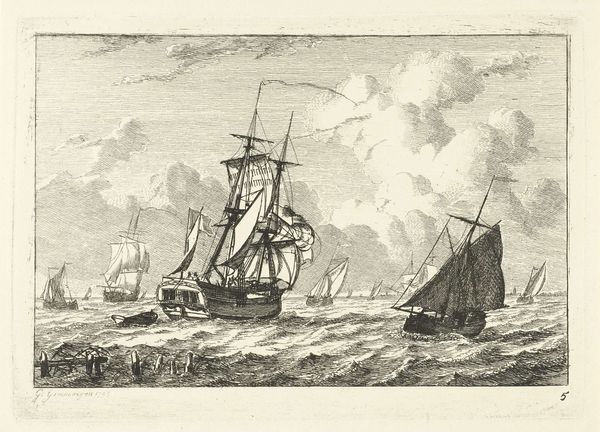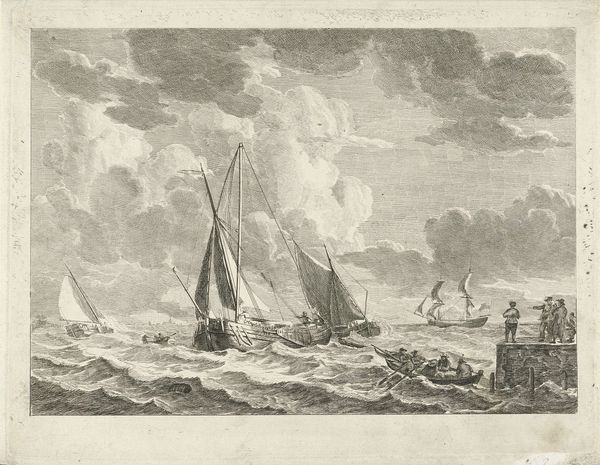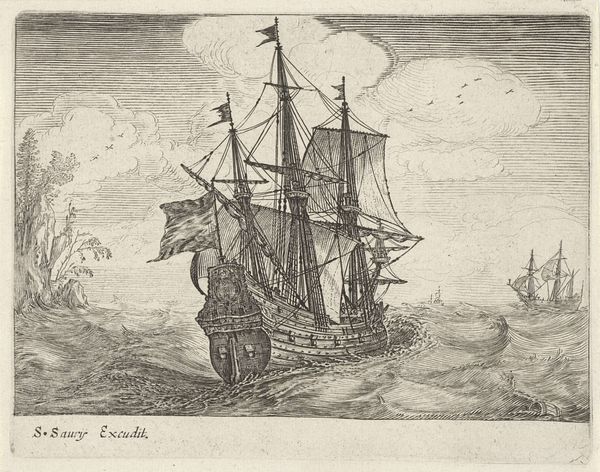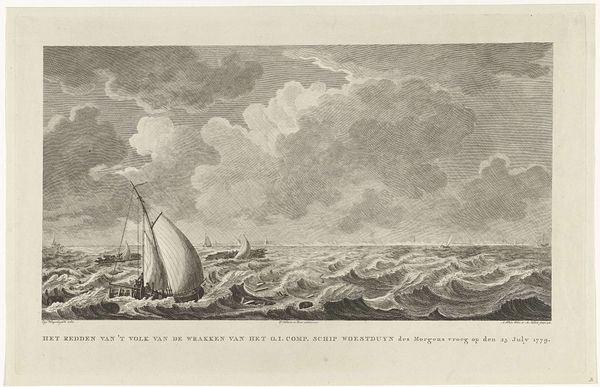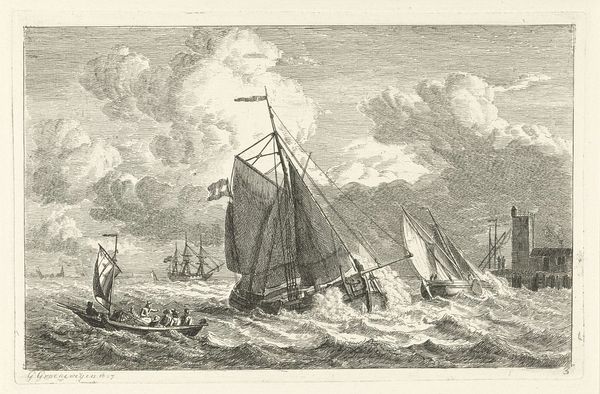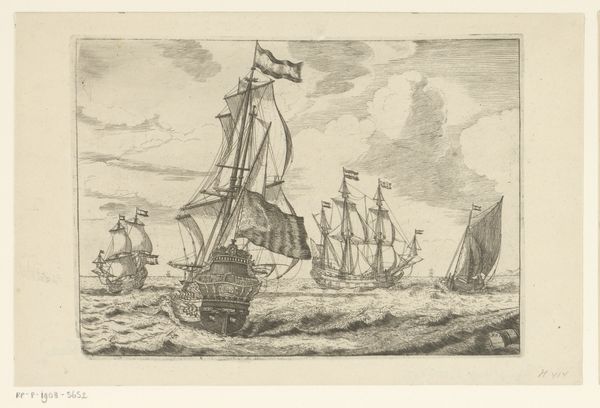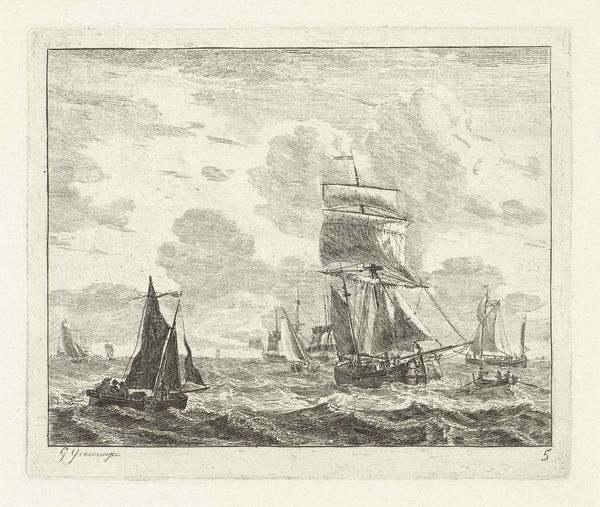
drawing, print, etching
#
drawing
#
baroque
# print
#
etching
#
landscape
#
genre-painting
Dimensions: Plate: 5 × 11 in. (12.7 × 28 cm) Sheet: 5 1/4 × 11 1/16 in. (13.4 × 28.1 cm)
Copyright: Public Domain
Curator: Just look at the tumultuous energy captured here. This etching by Wenceslaus Hollar, titled "A yacht and three warships in a storm," created in 1665, offers a glimpse into the raw power of nature. It’s currently housed at the Metropolitan Museum of Art. Editor: The immediate sense is of foreboding and awe. The monochrome palette emphasizes the drama, and the composition directs the eye to the struggling vessels amidst those aggressively rendered waves. Curator: Absolutely. Considering Hollar’s position at the heart of artistic exchange in 17th-century Europe, how do you see the work reflecting or engaging with its socio-political context, given the period's heavy reliance on naval power and trade? Editor: It speaks, perhaps unconsciously, to the precariousness of human enterprise against the brute force of nature. These ships—instruments of power and trade—are reduced to fragile playthings. Visually, I’m struck by how the diagonal lines of the waves and the leaning masts create a feeling of intense instability. Curator: Yes, and his decision to use etching—a more democratic and reproductive medium than, say, painting—likely influenced its dissemination. Etchings made such dramatic scenes accessible to a broader public. It brings the harsh reality of seafaring, a crucial element of 17th-century commerce and war, into people’s homes. How do the formal aspects amplify or mitigate this theme of vulnerability, in your view? Editor: Hollar's sharp lines render the fury of the ocean. Note the contrast in textures: from the frothy, agitated waves to the darkly shadowed clouds. There's a compositional balance, placing the struggling vessels on opposing sides, framing a central area of intense turmoil. Curator: A truly evocative rendering of man's contest with the sea and elements, deeply entwined with the very foundations of society then. Editor: Precisely; analyzing the stark contrasts in line and form opens up broader discussions around the themes that resonate even today.
Comments
No comments
Be the first to comment and join the conversation on the ultimate creative platform.
